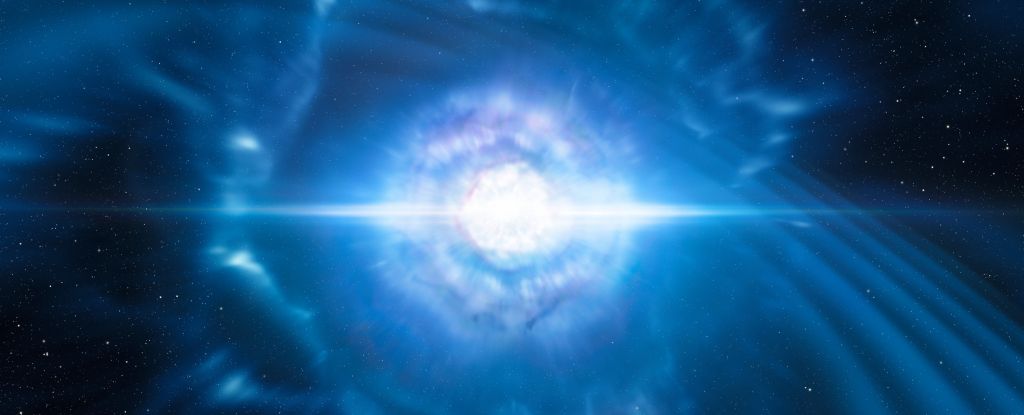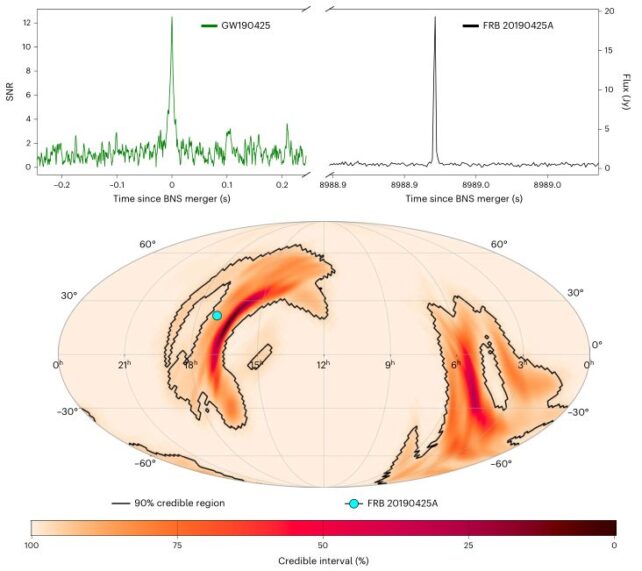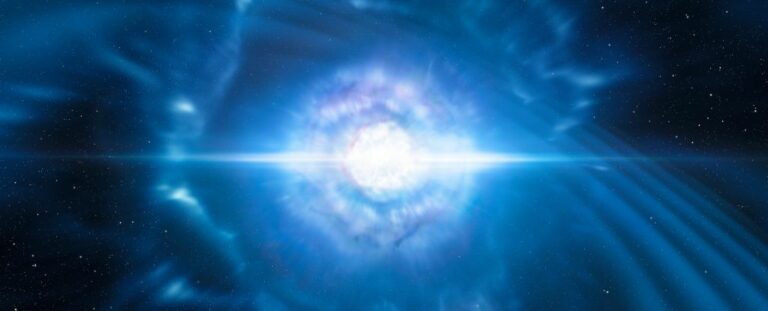Detection of Fast Radio Burst Occurs Shortly After Gravitational Wave Event, Raising Questions About Possible Connection
Occasionally, we pick up a peculiar signal from outer space on our detectors on Earth. These signals, known as fast radio bursts (FRBs), only last a few milliseconds and are solely detected in radio wavelengths. Despite their short duration, they can emit as much energy as 500 million Suns, and most of them have never been observed again. The mystery of what they are and how they originate remains baffling. However, a recent discovery could suggest a novel mechanism behind the production of these intense bursts of radiation.

On the 25th of April 2019, the Canadian Hydrogen Intensity Mapping Experiment (CHIME) detected a bright and non-repeating FRB. Remarkably, just 2.5 hours before, the Laser Interferometer Gravitational-Wave Observatory (LIGO) recorded a gravitational wave event when two neutron stars collided, culminating in their decaying orbit. The FRB originated from the same location in the sky as the gravitational wave event and from a comparable distance. A team of astronomers led by Alexandra Moroianu from the University of Western Australia has determined that the likelihood of the two events being unrelated is exceedingly small.
Fast radio bursts (FRBs) have been a puzzling mystery for scientists due to their one-off nature, with only a few of them repeating and the majority being extremely difficult to study. Previously, detecting them was a matter of chance, but all-sky surveys have increased the number of detections to over 600. In 2020, a significant breakthrough occurred when an FRB was detected from within the Milky Way galaxy for the first time, and it was traced back to a type of neutron star known as a magnetar. These magnetars have incredibly powerful magnetic fields that occasionally cause them to quake and flare, but it’s uncertain if they are the sole cause of FRBs, as the bursts vary greatly and likely have multiple mechanisms producing them.
Moroianu and her team explored the possibility of a correlation between FRBs and gravitational waves, particularly involving neutron stars, either during or after the detection of gravitational waves. To investigate this, the researchers examined catalogs from the CHIME and LIGO-Virgo observation runs during July 2018 to July 2019, respectively, which yielded a total of 171 FRB events. The team then cross-checked these events with the GWTC-2 catalog to find any FRB events that occurred within the same sky patch identified by LIGO near the time of a gravitational wave detection. The team’s search yielded a significant result.

LIGO detected GW20190425 on 25th April 2019 at 18:18:05 UTC, indicating a merger of two neutron stars at a distance of approximately 520 million light-years. The absence of detection by Virgo helped to narrow down the origin of the detection. On the same day, at 10:46:33 UTC, FRB20190425A was detected in the same region of the sky defined by LIGO as a potential source of the neutron star merger, with an upper distance limit of 590 million light-years.
The researchers concluded that it would be a remarkable coincidence if the two events were unrelated. The probability of both events occurring in the given distances, the timeframe of detection, and within the region of space defined by LIGO was just 0.00019.
Although the two events likely emerged from UGC 10667, more analysis is required to determine the mechanism that caused the FRB. The team’s current belief is that the burst was produced by a blitzar, a mechanism proposed for FRBs almost a decade ago. This occurs when a neutron star that is too massive to be supported by degeneracy pressure collapses into a black hole as its spin slows – the only thing preventing this collapse.
According to the researchers, although they cannot confirm a single theory that accounts for the potential GW-FRB association, it aligns with the theory of GW, short gamma-ray burst, and FRB association. This theory involves the collapse of a post-binary neutron star-merger magnetar, and the generation mechanism of the FRB is the blitzar mechanism, which has been supported by numerical simulations.
The researchers explain that the 2.5-hour delay time between the FRB and the GW event is the survival time of the supramassive neutron star before it collapses into a black hole, consistent with the expected range of the delay timescale for a supramassive magnetar from both theory and observational data.
The masses of the neutron stars of GW20190425 were much higher than most neutron star binaries found in the Milky Way. Lower mass binaries, which would produce more stable heavyweight neutron stars after merging, could survive a long time and repeatedly emit FRBs, which could explain the few repeating FRB sources.
However, it is still unclear if the two events were linked. It is certain, though, that the estimated rate of binary neutron star mergers is much lower than the rate at which FRBs like FRB190425A are detected, so this potential mechanism alone cannot account for the mysterious signals that cross the radio sky. Therefore, further research is required to investigate this phenomenon. Nonetheless, the progress made so far is exciting and suggests that we might be getting closer to finding answers.
The research has been published in Nature Astronomy.
Do not forget to share your opinion with us to provide you with the best posts !




0 Comments